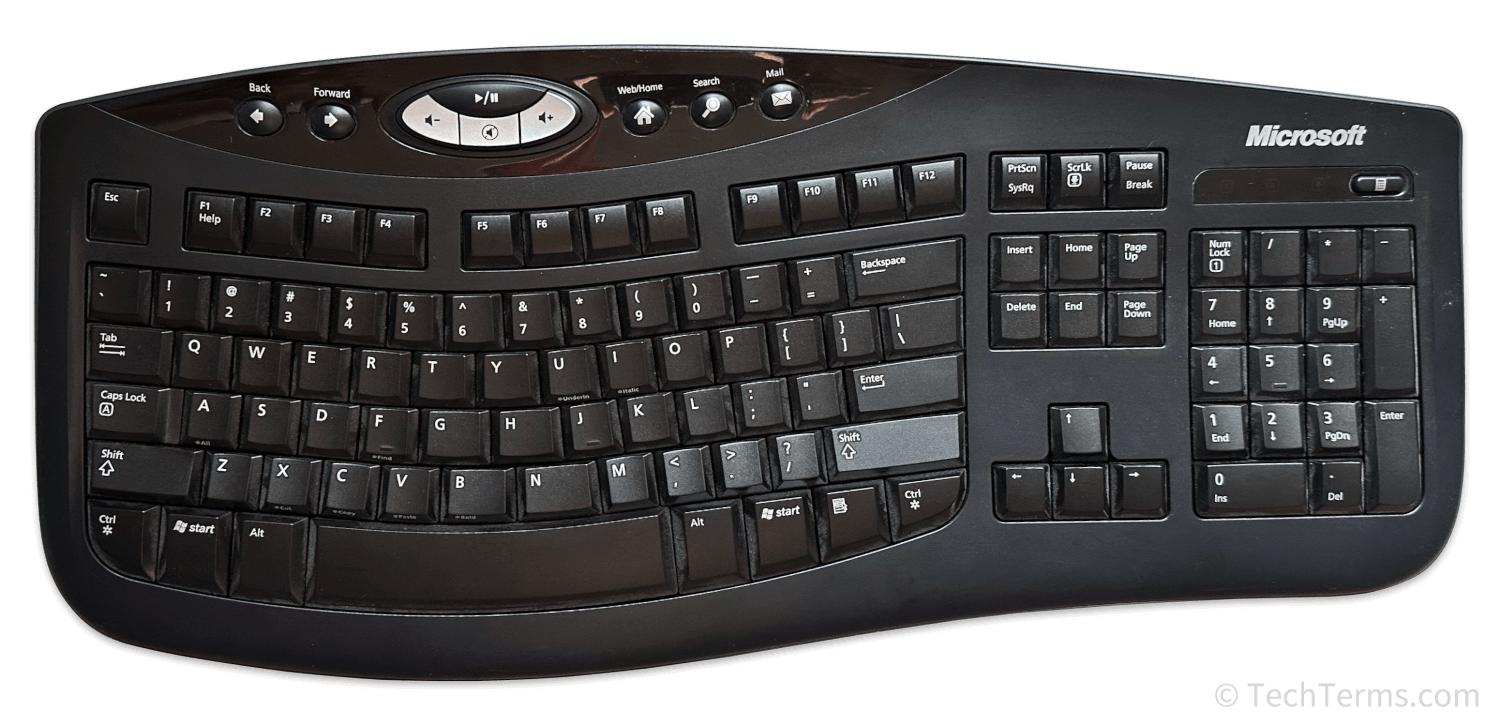Keyboard
A keyboard is the most common computer input device and is the primary way a computer's user enters text. Most computers use both a keyboard and a mouse or trackpad for user input, with the keyboard responsible for text input and the mouse or trackpad responsible for moving the cursor and interacting with objects on the screen. A keyboard may connect to a computer over USB or Bluetooth; laptop computers include built-in keyboards below the screen.
Each key on a keyboard includes at least one symbol representing the character that appears when you press that key. Every keyboard includes keys for letters, numbers, and common punctuation symbols, but exact keyboard layouts vary by region and language. Keyboards also provide keys that let you navigate around a text document, including a set of arrow keys. Even though some letters and symbols move from country to country, most keyboards use the QWERTY design that gets its name from the first six letters in the upper-left corner.

In addition to letters, numbers, and symbols, keyboards also include several modifier keys. When pressed with a letter, number, or symbol key, a modifier key modifies the signal sent to the computer. For example, pressing and holding the Shift key while typing changes typed letters from lowercase to uppercase and inserts other keys' alternate symbols. Using other modifier keys (like Command or Control) with certain keys instead triggers specific keyboard shortcuts. For example, pressing Command + S on macOS or Control + S on Windows triggers the universal keyboard shortcut for saving the active document.
Keyboards also include a row of Function keys above the numbers row, which perform specific system tasks when pressed. Many keyboards include special media playback keys that let you adjust system volume, play and pause, or skip tracks. Some keyboards include a 10-key keypad on the right side, but many keyboards omit this section to take up less space. A few keyboards even include special customizable keys that let you record your own keyboard shortcuts or run short macro scripts.
NOTE: Touchscreen devices like smartphones and tablets do not require hardware keyboards since they can use virtual software keyboards that appear on the screen when necessary. However, you can pair a Bluetooth wireless keyboard to a phone or tablet if you want to type with a physical keyboard.
 Test Your Knowledge
Test Your Knowledge